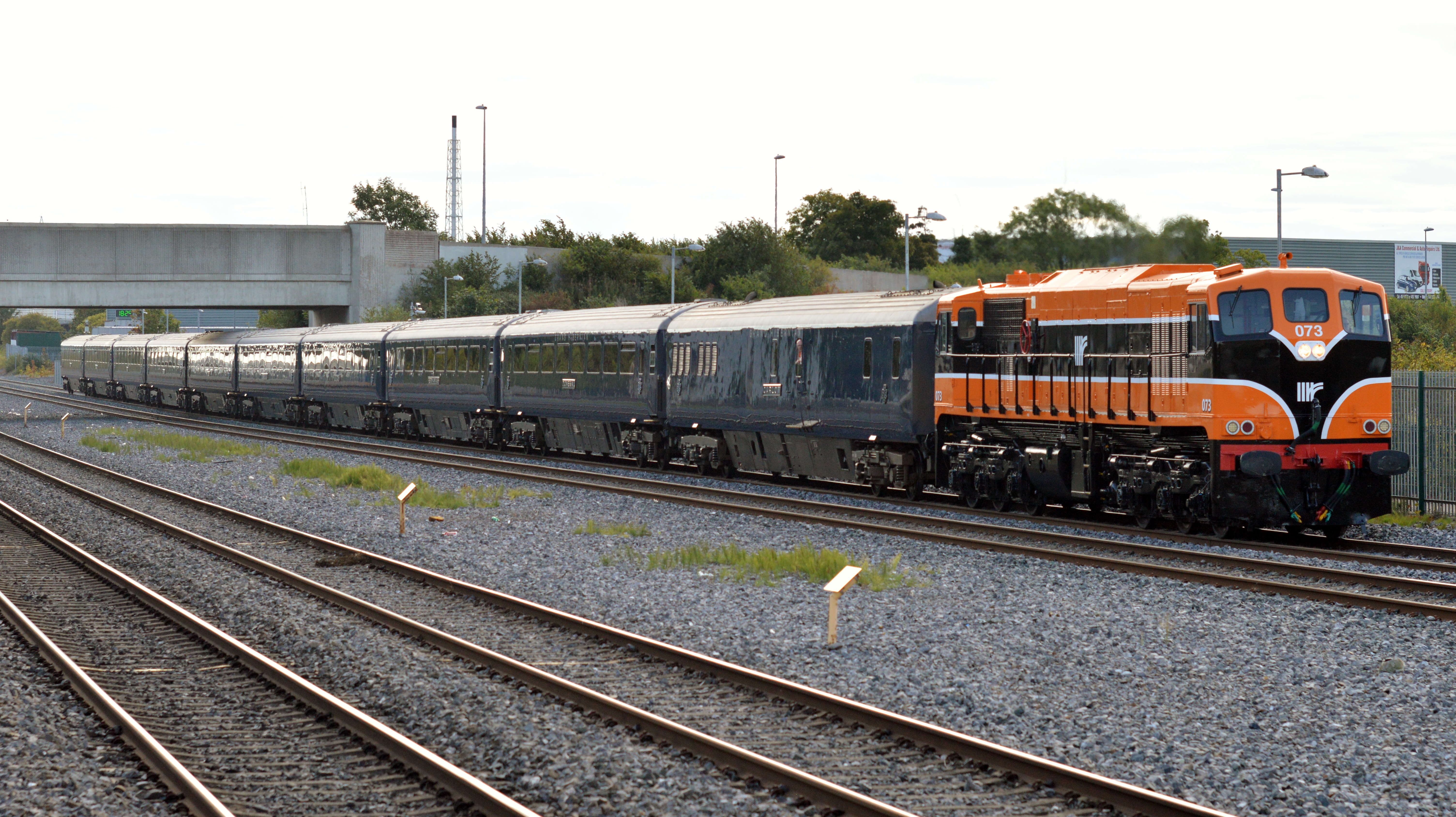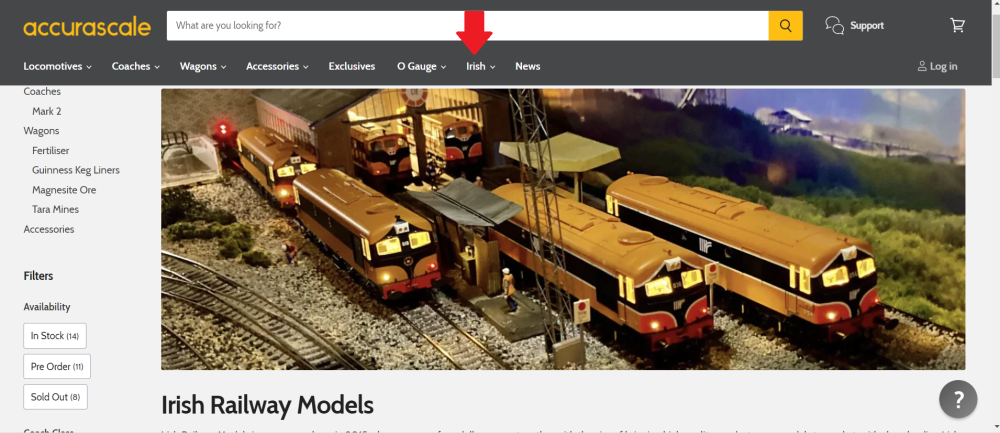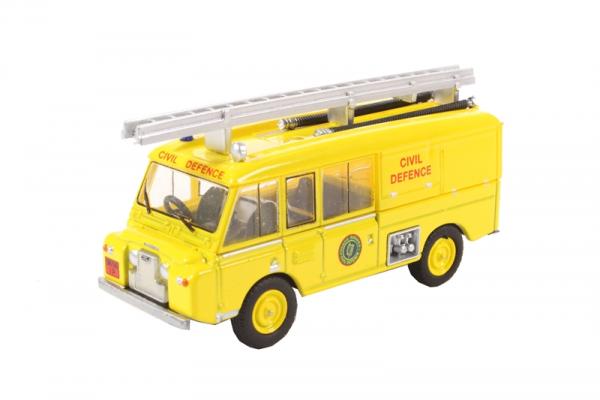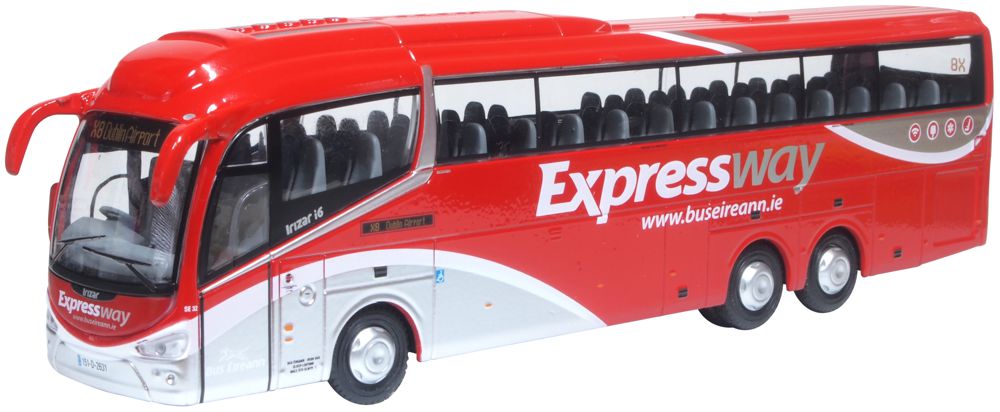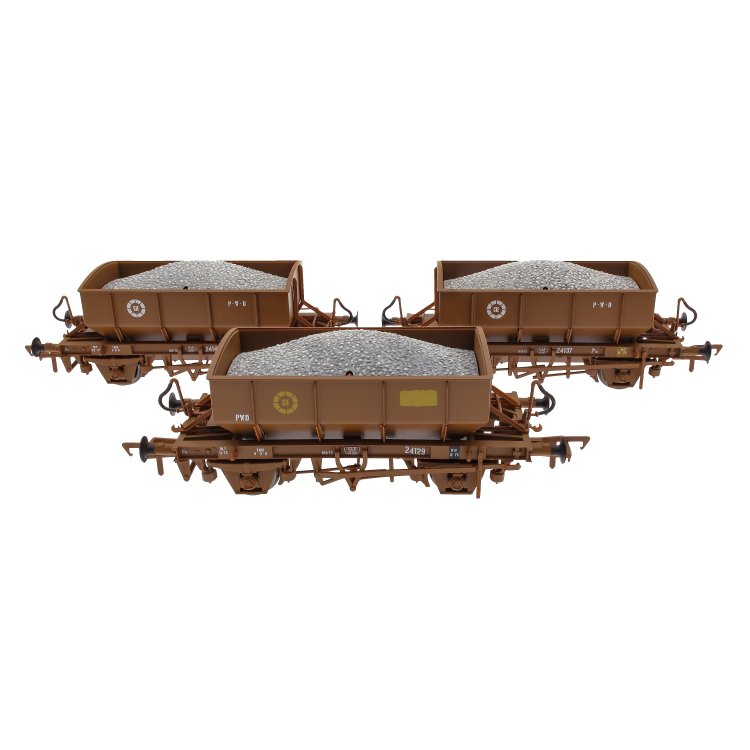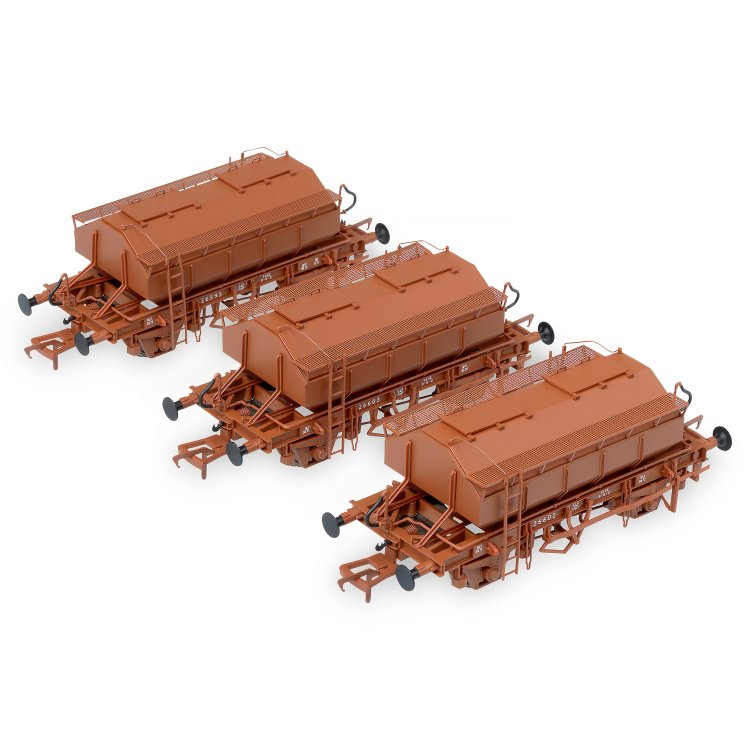-
Posts
7,093 -
Joined
-
Last visited
-
Days Won
251
Content Type
Profiles
Forums
Events
Gallery
Blogs
Store
Community Map
Everything posted by Warbonnet
-
Hi everyone, Great news! All IRM customers based in the UK can now buy all IRM models off the Accurascale website. Over the coming months we will phase out the irishrailwaymodels.co.uk website and all customer accounts will be moved to accurascale.com. So, why are we doing this, and why is it great news? Well, it brings lots of benefits for customers that we were unable to offer on the IRM UK website. We can now offer you different flexible ways for paying for your models, such as partial.ly, paypal credit and clear pay. On top of that, we can give you loyalty points, which can give you up to 3% back on future orders placed. You can also mix and match your orders with Accurascale models and benefit from free, tracked DHL next day delivery throughout the UK. What's not to like? These benefits are available to irishrailwaymodels.com customers (apart from Clear Pay and PayPal Credit, which are not available in the EU to date) so it is great that we can now offer them to IRM customers in the UK. Browse the range right here: https://www.accurascale.com/collections/irish-railway-models Cheers! Fran
-
- 3
-

-

-
A pint of plain is your only man. Never a truer word spoken! After massive demand, our keg wagons are back, featuring an all new line up with new running numbers, upgraded bogies with brass bearings for smoother (and less squeaky running) and a REDUCED price! What's not to like? While the conveyance of Guinness and other beers dates back to the days of steam, it was the emergence of ISO intermodal standards in the early 1970s which allowed breweries to maximise the potential of rail transport. Córas Iompair Éireann’s new fleet of 42ft bogie flat wagons were particularly suitable, as their capacity enabled large quantities of kegged beer to be transported efficiently. Although brands such as Harp and Heineken were also transported at various times, it is The Black Stuff which became synonymous with this traffic, with CIÉ constructing an additional batch of bogie wagons in 1978 specifically to meet the demands of transporting Guinness. The goods yard at Dublin’s Heuston Station became the focal point for this operation, with kegs being brought the short distance from the St James’s Gate brewery by road and transferred to 42ft wagons for distribution to depots located right across the CIÉ/Irish Rail and Northern Ireland Railways networks. These wagons were often mixed with other traffic, such as containers, bulk and bagged cement, and oil, but demand frequently called for dedicated trainloads, too. Initially carried in transport cages with kegs stacked two-high, trains stopped at signals in certain areas became a target for thieves, who could sneak aboard and remove kegs with relative ease. Keg trains were a common sight on the network for almost four decades. However, changes to the Irish railway environment in the mid-2000s resulted in the loss of several freight flows, with keg traffic being one of the high profile casualties, finally coming to an end in 2006. Our new run of keg wagons features all new running numbers, complimenting run one, while also catering for those who missed out. After all, run one sold out before arriving in stock. We predict a fierce thirst for these too, and with decorated samples already in hand production is now well under way. We envisage that delivery will be towards the end of this year alongside the new run of fert wagons. Priced at just €89.95 per twin pack, with 10% off when you buy two packs or more, and free postage and packaging across Ireland and the UK, they also offer unbeatable value. Hop up to the bar and get your round in, with four different packs available to pre-order right here. View the full article
- 4 replies
-
- 15
-

-

-
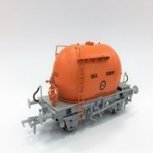
Wexford Model Railway Club Autumn Exhibition 9th October 2022
Warbonnet replied to Irishrailwayman's topic in What's On?
Very sad that IRM cannot make it but we will be at a UK show representing Accurascale that we had already booked in for. Hopefully next year the stars align and I get back to the Sunny South East! -
Great news! The production of our Class 92s is almost complete! Our second Accurascale locomotive promises to be the most technically advanced OO/4mm locomotive ever, with our DCC operated pantographs, powerbank capacitors, twin DCC sound speaker set up including "Accurathrash" bass speaker, differing lighting packages including 'depot' mode, upgraded LEDs as per the prototypes where applicable and much, much more! With production now in its final stages, we have begun to send out the remaining balance invoices to all customers who have paid deposits, so keep an eye on your inbox. To take account of pay days and financial planning, they are sent out in advance with a payment deadline of November 12th 2022 to ensure you have plenty of notice in order to pay the balance owed. All invoices will be sent out to direct customers by the end of this week. If you do not receive one by Monday, September 19th, please contact us via the chat feature on the website with your order number. If you have any queries please feel free to contact us via the chat feature on the website with your order number and we will be delighted to help you. Fancy a new Dyson for yourself? This one certainly won't suck, but will happily blow your mind on your layout! Pre-order remaining stock by clicking here! View the full article
-
- 4
-

-
Hi George, They sure do. As per our recent Tara run and bogie packs. Cheers! Fran
-
Hi DoctorPan, No, as we have plenty of white ones in stock we havent ordered green ones as a separate accessory. Cheers! Fran
-
In stock! https://irishrailwaymodels.com/collections/cie-bogie-fertiliser-wagon/products/fertiliser-pallet-loads-6-pallets-of-fertiliser-bags
-
Great news! Decorated samples of our second run of CIE Fert wagons have arrived for inspection. They are looking very good too, with just some minor tweaks, like the buffers needing to be black, required. The new run of ferts also come on our newly modified bogies, fitted with brass bearing cups as first seen on the new run of Tara Mines wagons for better rolling resistance and less squeaking! The best just got better. A quick sell out on run one, our second run has also been immensely popular with over 60% of the production run sold out on pre-order. When you consider that they are just £76.95 for a twin pack, and that you get 10% off when you buy two or more packs, and free postage and packaging to Ireland and the UK, it's easy to see why they're so popular. Full production samples are due with us shortly and delivery to customers will be before Christmas. Our factory has made very swift progress on these and they may be earlier than anticipated. Look out for more updates on that soon. In the meantime, check out the images below, and place your order here! View the full article
- 16 replies
-
- 11
-

-

-
Hi everyone, Just a quick note to thank you all for supporting this fundraiser for the Downpatrick and Co. Down Railway. Though your purchases of these wagon packs in August we were able to raise €2,000 for the railway! Thank you so much to everyone who dug deep and supported the DCDR. We hope you are enjoying your new purchases and being safe in the knowledge that you contributed to preserving our railway heritage! Cheers! Fran
-
If they got their pre-order in then yes they will have them.
-
Hi everyone, Pre-ordered Your Mark 2s Yet? Two Packs Already Sold Out! Our Mark 2 Enterprise and RPSI coaches are due at the end of this year and already have been a huge hit on pre-order. With our unbeatable spec of high detailed, interior lighting, bespoke tooling suite for the NIR versions coving wider bogies, generator, kitchen and driving cars and more, it's easy to see why. Two packs are now sold out on pre-order (including the RPSI pack), with others not far behind. So, if you fancy a rake, act soon to avoid disappointment! Pre-order here: https://irishrailwaymodels.com/collections/mark-2-coaches Cheers! Fran
-
We're delighted to announce that Steve Purves is now a member of the growing Accurascale family, joining us in the capacity of Project Manager. Having spent seven years with Bachmann Europe as a Project Engineer, Steve has overseen the research, design and development of a range of locomotives, wagons, coaches and accessories across OO, N and 009 gauges. Many of these models have won various industry awards and won plaudits from across the hobby. Previous to his experience in the model railway industry, Steve has also worked in various roles within the real railway. Working for WH Davis Ltd, Steve was responsible for and maintained a fleet of 50 PHA/JGA Bardon Aggregates hopper wagons, developing an expert, in-depth knowledge of them during this time. Prior to his time with WH Davis, Steve worked for EWS as a fitter at Toton, working with locomotives, undertaking periodical exams and preparing them for tyre turning. As well as working with us here at Accurascale, Steve will continue to run his highly successful "There and Back Light Railway", a pop up light railway that can be hired for events or educational purposes in the midlands alongside his wife, Naomi. The There and Back Light Railway has won a Smallbiz100 and a Theo Pahitis SBS award, so be sure to check it out via their website by clicking here! Relishing the prospect of working with Accurascale, Steve said; "It is my pleasure to be welcomed in to the Accurascale family. I am looking forward to working with the team and meeting all of our valued customers in the coming months and years. There is no doubt that there is a certain energy within Accurascale and a real buzz surrounding the models that are being produced. I am excited to be given the opportunity to continue developing models for a company that clearly wants to push the boundaries model technologies and cannot wait to get to grips with my own projects in due course." Likewise, Accurascale/IRM Managing Director Stephen McCarron is delighted to welcome Steve on board; “We’re thrilled to welcome Steve to our family here at Accurascale. He brings passion for engineering, accuracy and model diversity as well as a wealth of experience and industry knowledge with him. Steve also shares our desire to produce highly detailed definitive models which set us apart from our competitors. With our exciting plans over the coming years, he adds his distinctiveness and drive to our team.” Look out for even more new models with Steve's hallmark on them from Accurascale very soon! View the full article
-
- 11
-

-
Last day folks, ends at midnight. Get ordering!
-
nope. Nothing as of yet.
-
Hi everyone, Just a reminder that our fundraising drive for the DCDR ends on Wednesday night! If you want a mag or ballast triple pack of wagons with €10 off each pack going to charity now is the time to get shopping! Ballasts: https://irishrailwaymodels.com/collections/ballast-hoppers/availability_in-stock? Magnesites: https://irishrailwaymodels.com/collections/magnesite-wagons/availability_in-stock? Cheers! Fran
-
Hi everyone, As you may know, we have been adding to our retail range of diecast models to enhance your website (or just collect, whichever you prefer!) with items that are both Irish or can be easily adapted for Irish use. The new Oxford Civil Defence forward control Land Rover has now been added to our website and is in stock: https://irishrailwaymodels.com/collections/vehicles/products/land-rover-ft6-civil-defence We are also now taking pre-orders for the new Oxford Diecast Expressway coach too: https://irishrailwaymodels.com/collections/vehicles/products/irizar-i6-bus-eireann-expressway-tri-axle-coach-route-x8-dublin-airport We have also added some of the Tiny Toys range which gives us access to OO gauge Isuzu and Hino trucks, something which are a must for an Irish layout and can be made to look home grown with a little bit of work. Should these prove popular we can look to stock more of the range. https://irishrailwaymodels.com/collections/vehicles/products/isuzu-n-series-sf-express-freezer-truck-black https://irishrailwaymodels.com/collections/vehicles/products/hino-700-refuse-truck-johnson-white We also have good stock of other favourites such as Garda vans, civil defence vehicles, cars, trucks and of course our own Britbus commissions of Dublin Bus double deckers and forklifts. Remember, free postage to Ireland on all orders over €50! Browse the full in stock range here and let us know what you think or are looking for! https://irishrailwaymodels.com/collections/vehicles/availability_in-stock? Cheers! Fran
-
Hi everyone, Now available to pre-order on the IRM website: https://irishrailwaymodels.com/collections/vehicles/products/irizar-i6-bus-eireann-expressway-tri-axle-coach-route-x8-dublin-airport Make sure you get your order in quick as these will be popular. Cheers! Fran
-
Hi everyone, Limited amount of pack G remaining! Keen to bolster your Tara fleet, or indeed build up a rake? Make sure you move fast, it's likely we wont make these again for a looonnggg time. And once they're gone, they're gone. At £79.95 per twin pack, and 10% off when you buy two packs or more and free postage and packaging around Ireland and the UK, they're exceptional value for high quality, Irish outline rolling stock. Order now: https://irishrailwaymodels.com/collections/tara-mines/products/tara-mines-ore-wagon-pack-g Cheers! Fran
-
Hi everyone, Just a quick note to congratulate the Táilte Tours team on a fantastic day out on Saturday on board the Premier Rose tour. Three of the IRM crew enjoyed the spin to the Kingdom but sadly we didnt find any roses. Still, we had a great laugh and were delighted to see that our raffle prizes found a good home too! Looking forward to the next one! Cheers! Fran
-
Hi everyone, Thanks to everyone who has supported this drive so far. We have raised some funds to help with the move but we really want to raise some more to support the guys at Downpatrick. Make sure you buy your ballast or magnesite packs between now and August 31st to donate your funds to the DCDR and Irish railway preservation! https://irishrailwaymodels.com/collections/wagons/availability_in-stock? Cheers! Fran
-
Sorry guys, we have so few ballast packs left it just isnt viable. Though it's why we included the mags in the fundraiser. Cheers! Fran
-
Hi everyone, We're on a mission this month, and we need your help! As most of you who followed our story since our inception will know, the humble CIE ballast hopper wagon is very close to our hearts. It is after all, our first model and basically the catalyst for us to become the model railway manufacturer we are today. It was also the subject of the very first correct RTR model of an Irish outline wagon that did not have to borrow from elsewhere. Unfortunately, the real wagons are now close to the end, as many have been cut up in North Wall in recent months. However, our friends at the Downpatrick and Co. Down Railway have the opportunity to save three hoppers and a plough van for their permanent way trains on Ireland's premier preserved railway. These also signify an era of railfreight optimism in Ireland in the 1970s, and were among the last wagons to be built in Inchicore and indeed this country. A deal has been done with IE to secure the wagons. However, road transport is costly and time is running out before IE require the space they currently occupy in North Wall yard. So, we are here to run a fundraiser with your help. For the rest of the month of August, we are pledging to donate €10 from the sale of every triple pack of our ballast hoppers, or triple packs of the new magnesite wagons from our website to the Downpatrick and Co. Down Railway. Not only will this help preserve the wagons, but it will be the perfect excuse to get you some shiny new models AND really help out a preserved line still feeling the affects of COVID lost revenues. Speaking on the wagon preservation opportunity, DCDR Chairman Robert Gardiner stated; ""The opportunity to acquire these ballast hoppers will not only strengthen our permanent way, or track, equipment to help keep our lines in tip-top condition, but also helps save some of the last railway wagons actually made in Ireland. "We are absolutely thrilled to get this backing from Irish Railway Models, who we have usually worked with the other way around, providing them with access to many unique items of Irish rolling stock to model. There is a fitting irony that they now get to work with 1:1 scale units! Our sincere thanks to the guys for their continued support of the DCDR." So, if you can dig deep, and pick up that pack of ballasts or mags between now and August 31st, you can do so safe in the knowledge that you are partly funding Irish preservation and donating to charity! Order your ballast triple pack of wagons here: https://irishrailwaymodels.com/collections/ballast-hoppers/availability_in-stock? Order your magnesite triple pack of wagons here: https://irishrailwaymodels.com/collections/magnesite-wagons/availability_in-stock+format_triple-pack? Cheers! Fran
-
Time for another project update. This time it covers the one of our 'legacy' projects that suffered delays due to, well, several factors including factory shutdown due to COVID. It is of course the Mark 5 coaches. However, there's good news, LOTS of good news! As we reported on social media (but not on here, we'll do better in future) a couple of months back, the Mark 5 coaches are now in production. We have sent out invoices for payment balances with plenty of notice ahead of their arrival so you can plan payment around your pay days too. We had a lot of tweaking to do from the decorated samples you saw on our stand at the recent Glasgow and Alexandra Palace shows, particularly around the glazing and the finish on the wheels to get the look of the prototype correctly modelled in miniature. They have both now been duly nailed with the factory's help to ensure we make the best coaches around when they arrive on the market. The good news continues with confirmation that the Caledonian Sleeper coaches are now almost complete and are due to leave the factory at the end of this month, hitting the high seas in late August and arriving in stock in mid October. This will be the first of two batches of Accurascale Mark 5 coaches. Our TPE coaches are just behind the sleepers in production and are due to be completed by the end of September 2022, with delivery into stock in November 2022. The TPE sets were shaping up rather nicely but did face some light bleed issues on the driving trailer, so we had to take our time to get this right and ensure the various complex lighting arrangements (depot, night time and day time) were correct and did not bleed out of anywhere it was not supposed to. The destinations have been further refined on our test mule too, but it gives you some idea of the lighting set up that will be on the finished driving cars! With the Deltics delivered, the Classes 92, 37 and Mark 5s now in production and the Manors about to get underway, it signifies the huge push we have made to get any of the delayed legacy projects completed and delivered by the end of this year. This will now allow us to focus on keeping our announced and future projects delivered in a timely manner against the timelines we publish when we first announce them. We are finally getting there after a lot of hard work, so we appreciate and thank you for your patience! Remember, the only place you can buy your OO/4mm Mark 5 coaches is direct via our website, so don't miss out. Pre-order yours today by clicking here. View the full article
- 1 reply
-
- 6
-

-

-
Hi everyone. IRM will be donating a couple of prizes for the raffle naturally. Cheers! Fran
-
Hi everyone, Past the 60% sell out of these now. Absolutely flying out the door. Don't miss out! https://irishrailwaymodels.com/collections/cie-bogie-fertiliser-wagon/availability_pre-order? Cheers! Fran
.png.c363cdf5c3fb7955cd92a55eb6dbbae0.png)
